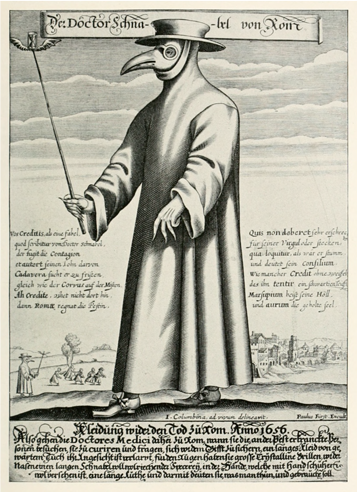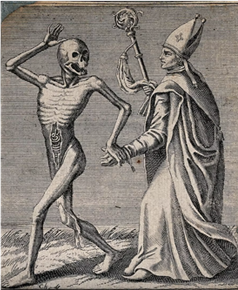The black death, also known as 'plague', 'blue sickness' 'pestilence' and 'the great mortality' among other monikers was a pandemic of plague that occurred from the year 1346 to the year 1353. It is the most fatal pandemic recorded in human history, as it's been estimated that between 70 million to 200 million humans died from it. A staggering number especially considering that the entire world's population was less than half a million at the time, therefore the black death reduced humanity's number up to a near half.
This pandemic changed the very course of humanity to a substantial amount, accelerating the evolution of science and medicine, a deeper understanding of illness and disease, society, politics, economics and etc, which is one of the many reasons I find it so fascinating.
It's my intention with this page to hopefully sufficiently explain the impact the black death had on the world, whilst also expanding my own knowledge on the subject as writing about it will probably be beneficial for me! Please keep in mind I am just some rando on the internet, so most of the stuff on here I learned from the internet, documentaries, books and other sources. I am definitely not an expert in this subject, but I do find it very interesting. I hope you will enjoy what I have to say and hopefully learn a few cool things as well!

Symptoms and how the plague manifests
The plague is caused by Yersinia Pestis, a zoonotic bacterium that is capable of infecting a wide variety of mammals. It usually spreads to humans from fleas or rodents, and then from human to human, often making the host very ill with a varying intensity of symptoms and percentage of mortality depending on the variant.
Yersinia Pestis, the bacterium responsible for dragging at least 70 million people to their graves.
There are three main types of plague. I will be going over each one in sections.
The most common is the bubonic variant. The bubonic plague typically infects the body via a rodent or flea bite.
This form has an average incubation period of 1-7 days and an average life expectancy of roughly 50 – 60%, thus making it the least lethal form of plague of the three main types. Usually flu like symptoms would appear initially, such as body aches, headaches, chills, high fever, and weakness, but that was only the beginning of a much worse symptoms.
The most infamous symptoms of the bubonic plague is the emergence of 'buboes', which are painful boils that grow in the groin, neck, groin and armpits.

This is because when Yersinia pestis enters through a person's skin, such as via a bite from an infected flea, the bacteria will travel to lymph node to lymph node to lymph node via the bloodstream and multiplies there, causing the nodes to swell, thus creating the characteristic buboes that is often portrayed in art. See figure below.

Plague boils are usually about the size of an egg, but sometimes they become even bigger. They'll also sometimes turn necrotic, or will burst and leak out a putrid black and yellow liquid which but boosts the chances of recovery, thus plague doctors would sometimes burst these boils to give the affected party a bigger chance for survival. However this made it even more likely that another host would become infected, as it was teeming with bacteria just waiting to enter another body.
Survivors would sometimes be so badly affected by the buboes that they were permanently disfigured. There are tales of people having crooked necks or really nasty scars long after having recovered.
There were also some, strange methods of 'curing' these plague boils to say the least. With no knowledge of how in the world to relieve the patient from buboes, desperate times called for desperate measures, and seeing how chicken was a common source of medicine, and they were believed to have special healing properties, there was no answer but to pluck the feather's from a chicken's behind and strap it onto the patient's buboes. It was thought the chicken could draw out the 'poison' from the buboes.
If the chicken were to die, they'd simply replace it with another chicken and so on until the patient died, the bacteria from chicken anus probably didn't exactly help the buboes disappear either, I'm sure.
Another common symptom of the bubonic plague, especially the septicemic variant, is acral necrosis of the hands and feet along with other parts is what is thought to have given the plague the moniker "The Black Death".
Acral necrosis occurs when not enough blood supply flows to the affected area, thus triggering the death of tissue.

Less known symptoms of the plague are intolerance of light, muscle spasms, back pain, difficulty with sleep, and delirium.
Moving on from the bubonic plague, the pneunomic plague was the second deadliest plague. This is the form that spread from human to human through coughing or sneezing, making it very infectious especially in urban areas.
Pneunomic plague attacks the lungs, causing difficulty breathing, making the affected party cough, often to the point of coughing up blood and watery or bloody sputum.
Sporting a death rate of up to 90%, there's no wonder so many people died. This form also had an average incubation period of about 1 to 3 days.
Now I want to discuss the septicemic variant. Septicemic plague occurs when plague bacteria multiplies in the blood. It spreads the same way as the bubonic variant, through a flea or a rodent bite. Buboes do not typically appear with this form, but it has a shorter incubation period than the bubonic variant and a significantly higher death rate than both of the previous forms.
In the 14th century, the septicemic form was always certain death seeing as the body would eventually undergo massive shock. In fact, people sometimes died as fast as within 14 hours of contracting plague if it became septicemic. It can be a complication of pneumonic or bubonic plague or it can occur by itself.

I am an idiot so geography and stuff like that is not my forte, but gathering from stuff I've read, I can only assume that the bacterium eventually infected rodents and various animals residing in its birthplace, before eventually infecting humans. I'll write about this more in detail later.

I am an idiot so I am not very


look at that drip
There is an early reference from the year 1373 where physician who treated plague patients were given the recommendation to wear masks. Interestingly, the famous look I mentioned above might not even have taken its shape until the year 1619 (when a plague outbreak occured in Paris) when a French physician named Charles De Lorme invented the prototype of the suit we know so well today. This is very fascinating to me because I didn't even learn of this until just now when researching the origins of the plague doctor! It's actually kinda unclear to me what the initial version of the plague doctors might have looked like.
The reason for the long beaks on the masks was not a fashion statement, but because it was a long held belief that the plague infected new hosts via something that is called miasma. Miasma theory was the belief that many diseases were from toxic air or mist from filth and rotten organic matter. Seeing as plague doctors were constantly exposed to infected patients suffering from plague boils and necrosis, the bird like design was supposed to dissuade these noxious odours from entering the plague doctor's bodies.
The beaks were commonly filled with herbs and flowers, such as lavender, mint, cloves, camphor and etc to 'block out' the plague. The lenses of the mask would often be made with glass or crystal to protect the eyes from miasma.
They'd also adorn thick overcoats, gloves, and to further prevent the spread of the disease. Another common accessory of the plague doctor was a staff to keep distance from those afflicted with the disease and in order to enable the doctors to examine or undress patients without touching them.
Many people likely mistook plague doctors as harbingers of death and as a warning for things to come. I want you to imagine what it was probably like to be stricken with plague, on your deathbed and in agonizing pain while you're not even sure what is happening to you and then seeing a figure clad in all black with strange bird-like masks appear in your home, poking and prodding at you. Plague doctors were likely a source of nightmares for many.
But plague doctors were unsung heroes of their time in many ways. They risked their lives to heal the sick, many probably getting infected with plague themselves and dying and most of the people who took this job upon themselves weren't even experienced physicians.
Bloodletting (the practice of withdrawing blood from a patient) was a popular method employed by plague doctors, because doctors believed that in order to keep in good health, the human body had to have equal amounts of blood, phlegm, yellow bile, and black bile. (I will write more about this later on)
They would also focus on getting rid of the buboes by lancing, rubbing toads onto them or applying leeches onto them. As you've likely noticed, rubbing animals upon buboes was a common theme.








Coming soon to a theatre near you!







